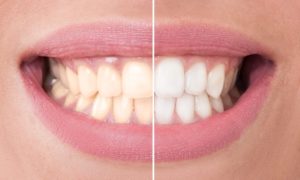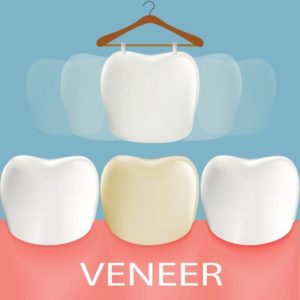Cosmetic Dentistry
Composite Fillings
Also called a “white” filling, these dental restorations are composite resins containing a mixture of acrylic plastics and quartz fillers. These restorations differ from amalgam (silver or mercury) fillings in that they are held in place by a bonded resin rather than mechanical retention. These materials have evolved to the point that they will last as long and are as durable as silver fillings.
Composite fillings are tooth-colored restorations that designed to prevent tooth decay, strengthen teeth weakened by tooth decay, and blend seamlessly into your natural smile. Placing a composite filling into a damaged or decayed tooth can significantly improve the appearance of a tooth. Composite fillings are incredibly durable and can be placed in just one office visit.
Silver fillings, also known as amalgam fillings, have been used by dentists for several decades. While silver fillings have the reputation of being safe and effective in protecting teeth from continued decay, they are a less unattractive option and have several disadvantages when compared to composite fillings.
The edges of silver fillings can, over time, cause stains on your teeth and gums. The metal of silver fillings expands and contracts during normal wear, which can cause cracks in teeth.
While silver fillings can last for many years, they are known to degrade or break, which can result in further decay or fracturing of the tooth.
Teeth Whitening
 Over time, our teeth can become stained due to pigmentation from bacteria, the foods we eat, and the use of tobacco and coffee. Fortunately, there are a variety methods for improving the color and appearance of your teeth. The most common type of whitening products is bleaching trays that use an oxidizing agent such as hydrogen peroxide or carbamide peroxide gel. By applying these types of compounds to a whitening tray - imagine a mouth guard - that is placed over your front teeth, the compounds can gradually remove stains from tooth enamel to create a more vibrate, brighter looking smile.
Over time, our teeth can become stained due to pigmentation from bacteria, the foods we eat, and the use of tobacco and coffee. Fortunately, there are a variety methods for improving the color and appearance of your teeth. The most common type of whitening products is bleaching trays that use an oxidizing agent such as hydrogen peroxide or carbamide peroxide gel. By applying these types of compounds to a whitening tray - imagine a mouth guard - that is placed over your front teeth, the compounds can gradually remove stains from tooth enamel to create a more vibrate, brighter looking smile.
Bleaching usually lasts for a few months before a reapplication is required. How frequently you need to bleach your teeth depends on your lifestyle, the foods you eat, and whether you have a smoking habit.
While bleaching can yield wonderful aesthetic results for patients, it is important to bleach as instructed. Over bleaching your teeth carries some risks that include increased tooth sensitivity and uneven results. Your teeth must also be healthy enough for bleaching.
Veneers
 This is a thin layer of restorative material (such as porcelain or composite) that is placed over a tooth to improve esthetics, usually on the front teeth. These restorations are bonded to the tooth with resin-based cement.
This is a thin layer of restorative material (such as porcelain or composite) that is placed over a tooth to improve esthetics, usually on the front teeth. These restorations are bonded to the tooth with resin-based cement.
Because they are so thin, they do not protect a tooth like a crown and are indicated in very specific cases.
Veneers can be completed in about three dental visits. The first visit involves a consultation with Dr. Beck where an impression of your teeth will be taken. The impressions are then sent off to the lab where your veneers will be custom made. During your second visit, Dr. Beck will prepare your teeth for the placement of the veneers. This may require removing a minuscule amount of tooth enamel to ensure the proper placement and function of the veneers. The veneers will then be placed and bonded to your teeth during the third visit. Dr. Beck will ensure that your veneers are crafted from the highest quality porcelains and are bonded with the most advanced and proven materials available.
Veneers require the same type and amount of care as regular teeth. Brushing twice daily and flossing once a day, along with regularly scheduled trips to our Portland cosmetic dental office will ensure a bright, healthy smile for years to come
Please talk with Portland cosmetic dentist Dr. Beck to see if dental veneers are the right restorative choice for you.
Tooth Bonding

Tooth bonding generally lasts from three to five years before repairs are necessary. South Waterfront Dental, Portland cosmetic dentist Dr. Todd Beck can complete your tooth bonding in one visit.
